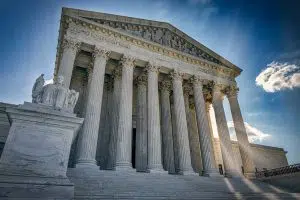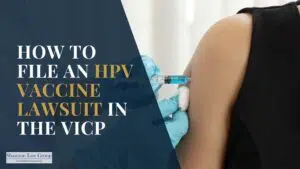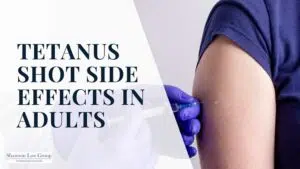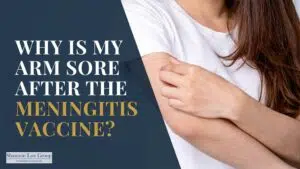
As a vaccine injury lawyer, I speak with people across the United States about a potential vaccine injury claim several times a week. Most callers had no idea that the Vaccine Injury Compensation Program existed before they were injured.
Typically, the person I’m talking to was injured or knows someone who was injured due to a vaccine. They found us when they started researching online.
Even then, callers who have done their research still have very little information about how the program works, who gets to use it, and the steps they have to take to get compensation.
To answer these questions, we need to understand the history of the Program.
Why does the Vaccine Injury Compensation Program exist?
In 1986, the National Childhood Vaccine Injury Act created the National Vaccine Injury Compensation Program (VICP). The VICP is a no-fault system that provides compensation to people injured by vaccines listed on the childhood vaccination schedule.
If you were injured by a vaccine before the VICP existed, you sued the vaccine manufacturers and healthcare providers in our national tort systems to receive compensation.
As vaccine production increased, there were more cases of vaccine injuries and more people looking towards litigation as their only remedy. Lawsuits against both vaccine manufacturers and physicians increased beginning in 1950 and continued to grow in the 1970s and 80s.
The History of DPT Vaccine Injury Lawsuits
The diphtheria-pertussis-tetanus (DPT) vaccine, in particular, led to a number of injuries and lawsuits. Eventually, many pharmaceutical companies that manufactured the DPT vaccine decided against continuing production after weighing the risk of increased litigation.
By 1984, only one U.S. company was making the DPT vaccine. If more and more pharmaceutical companies discontinued the production of vaccines, that would become a serious public health threat. Congress decided it was important to step in and do something.
Under the weight of these lawsuits, vaccine manufacturers and healthcare facilities threatened to reduce the production and administration of vaccines.
The government then recognized the importance of guaranteeing that everyone has access to vaccines. It also acknowledged that vaccines caused injuries in very rare cases. As a result, the government created the VICP.
In 1986 Congress enacted the National Childhood Vaccine Injury Act. Fundamentally, the Act’s purpose was to ensure that the public had continued access to vaccines.
In order to achieve that goal, the Secretary of Health and Human Services was tasked with creating the National Vaccine Injury Compensation Program (VICP). The VICP created a path for those injured by vaccines to petition for compensation without having to prove that a party acted negligently.
Under the Act, a person injured by a vaccine was prohibited from suing a vaccine manufacturer without first filing a claim with the VICP. Therefore, the VICP accomplished two things:
- It protected pharmaceutical companies, vaccine manufacturers, and physicians from lawsuits
- It created a no-fault compensation fund for those injured by vaccines.
Who can file a claim with the VICP?
The VICP maintains a list of “covered vaccines.” The Program recognizes that these covered vaccines cause specific injuries, illnesses, and conditions.
In order to file a claim with the VICP, you must have received one of those covered vaccines. There are several articles and blogs on our website on these covered vaccines. The VICP also created a “Vaccine Injury Table,” which lists injuries associated with each covered vaccine.
If you meet the criteria in the Vaccine Injury Table, the vaccine court presumes that the covered vaccine caused your injury. However, you must file your petition within three (3) years from the date of the manifestation of your injury (even if you didn’t know about it).
This deadline is called the statute of limitations. Read our article here on the statute of limitations for filing vaccine injury cases.
As I mentioned before, I talk to several people who only found out about the VICP years (sometimes decades) after they were injured by a covered vaccine. Unfortunately, in many cases, I have to inform them that it may be too late to file a claim.
A person filing a Petition with the VICP is called a “Petitioner.” A Petitioner can file a petition on his or her own, or they can hire an attorney to do so. A Petitioner can also be represented by a parent or legal guardian if they are a minor or disabled.
Who Decides if I’m Entitled to Compensation for a Vaccine Injury?
The VICP is run by the Secretary of Health and Human Services (HHS). They act as the “Respondent” for each Petition that is filed with the Program.
In vaccine court, the HHS is represented by an attorney with the Department of Justice (DOJ), who appears on behalf of HHS for all proceedings before the Court. HHS ultimately reviews your Petition filed in the VICP and prepares a report either conceding or disputing a vaccine injury.
The U.S. Court of Federal Claims and its Office of Special Masters will make the final decision.
The “Special Master” is the judge that presides over the Court and the proceedings regarding a Petition. He or she is ultimately who decides whether your vaccine injury case is entitled to compensation and, if so, how much.
Each Petition generally follows the same path after it is filed and assigned out. However, the Special Master has leeway, based on personal preference, to order the parties (Petitioner and Respondent) to do or not do things during the course of the case
The VICP wasn’t set up to be an “adversarial” program. However, the U.S. Department of Justice and its attorneys fight these Petitions and the amounts awarded.
What Compensation Is Available for Vaccine Injuries from the Government?
In the VICP, a Petitioner is entitled to limited compensation. There are four types of vaccine injury compensation available:
- Pain and suffering
- Past (unreimbursed) medical expenses
- Lost wages or earnings
- Future medical expenses
How is the VICP funded?
The VICP receives money for compensation from a trust fund. This trust fund began for vaccinations administered after October 1, 1988. The fund receives $0.75 for every dose of a vaccine administered.
As of March 2020, the Fund had accumulated nearly $4 billion dollars.
For context, over the course of 32 years, the Fund has paid out about $4.3 billion dollars in compensation for both injured petitioners and attorneys’ fees. That may seem like a lot of money, however, only 21,757 Petitions have been filed since 1988. The Fund is not going to run out any time soon.
The U.S. Department of Treasury manages the fund. The fund pays both the petitioners and their attorneys. That way, petitioners can find and hire an attorney without worrying about paying them.
The truth is, the VICP is quite young. The Program is still changing and being amended.
For instance, the Vaccine Injury Table was just updated a few years ago. We will continue monitoring any changes or proposed changes that come up as the VICP evolves.
How much does it cost to hire a vaccine injury lawyer?
Nothing. Well, that’s the short answer. If you decide to proceed pro se, you will be responsible for all of your own fees and costs up front. The Court strongly encourages Petitioners to hire attorneys to handle their cases – and with good reason. It’s free.
The government pays for your attorneys’ fees and expenses. Our firm does not charge our clients anything – no up-front retainers, no monthly bills, no invoices for costs even while the case is pending. We petition the government for our fees and costs as the end of the case – win or lose.
Injured by a vaccine? Contact us today
If you believe that you have been injured because of a vaccine, you may be entitled to compensation. Call us at (312) 578-9501 or fill out our contact form to get started on your free case review.
Schedule Your Free Consultation Today



